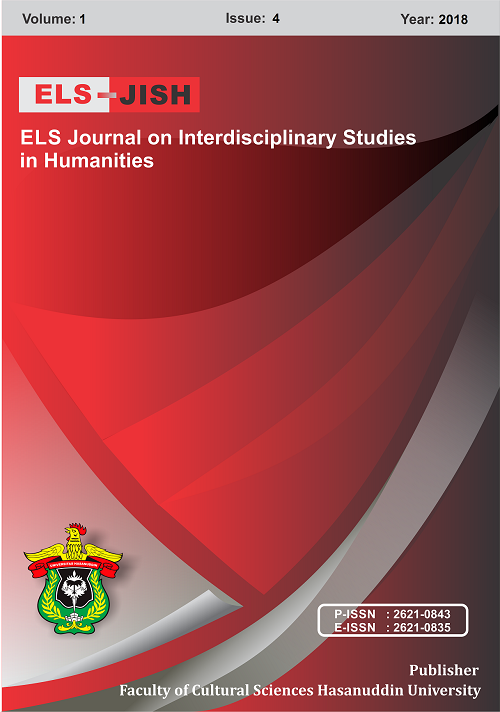Translation Technique Analysis of Mandarin Compound Sentence in Novel Huózhe 《活着》
DOI:
https://doi.org/10.34050/els-jish.v1i4.4356Keywords:
Mandarin Compound Sentence, Translation Technique, Novel Huózhe 《活着》, Novel to Live (Hidup).Abstract
The purpose of this research was to describe the translation technique from novel Huózhe 《活着》 written by Yúhuá (余华) and novel to Live (Hidup) by Agustinus Wibowo. The collected data were Mandarin compound sentences taken from novel Huózhe 《活着》 and the translation sentences from novel to Live (Hidup). Here, this research used qualitative descriptive method and provided by field work method. The techniques included content analysis, focus group discussion, and questioner. The researchers also provided the triangulation method, and used Spradley’s theory to analyze the data. This research used Molina & Albir’s theory to study translation technique. The study showed the result of any kind translation techniques which used by the translator in the translation novel. This research only analyzed Mandarin compound sentence and its translation result in the target text. Based on this result, there are sixteen translation techniques that found, i.e established equivalence 831 (71,39%) data, variation 93 (7,99%) data, transposition 61 (5,24%) data, modulation 52 (4,47%) data, natural borrowing 46 (3,95%) data, explicitation 26 (2,23%) data, implicitation 20 (1,72%) data, discursive creation 9 (0,77%) data, addition 7 (0,60%) data, paraphrase 5 (0,43%) data, reduction 4 (0,34%) data, annotation 3 (0,26%) data, literal 3 (0,26%) data, generalization 2 (0,17%) data, adaptation 1 (0,09%) data, and particularization 1 (0,09%) data. Established equivalence is the dominant translation technique used to translate Mandarin compound sentence in novel Huózhe 《活着》.It is used because the translator can keep the messages of the various term in Mandarin compound sentence. The techniques that are applied to translate Mandarin compound sentence in novel Huózhe 《活着》can be used as a consideration to translate Mandarin compound sentence into Indonesia.Downloads
Download data is not yet available.
Downloads
Published
2018-12-26
How to Cite
Wardhana, H. S., Nababan, M. R., & Wibowo, A. H. (2018). Translation Technique Analysis of Mandarin Compound Sentence in Novel Huózhe 《活着》. ELS Journal on Interdisciplinary Studies in Humanities, 1(4), 519-529. https://doi.org/10.34050/els-jish.v1i4.4356
Issue
Section
Articles

















